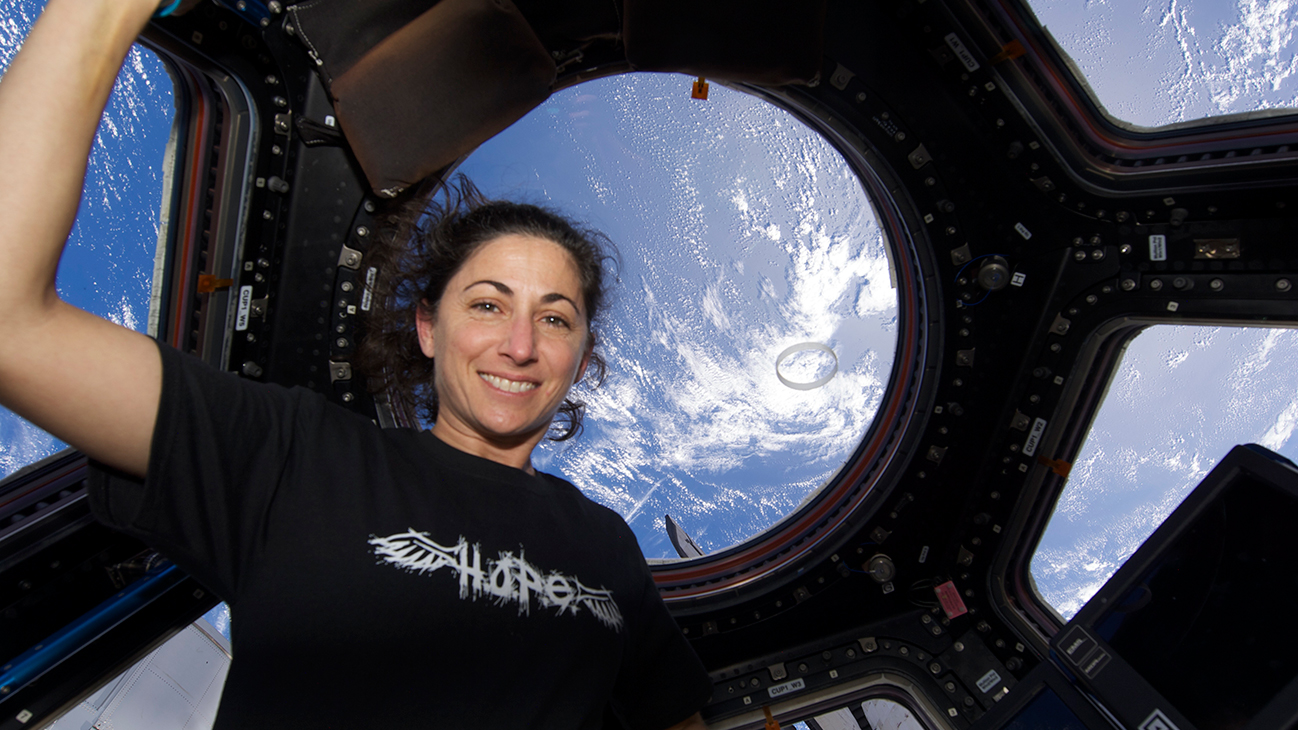NASA veteran Nicole Stott spent 104 days living and working in space on both the Space Shuttle and the International Space Station—that includes two spaceflights and the honour of being the first astronaut to paint in space. Back on Earth, she inspires audiences through a unique approach to education and wellness that focuses on the interplay between science and art.
Stott is profiled in this month’s SRQ Magazine where, among other things, she shares what she painted in space and the odd mechanics of painting in zero-gravity:
From SRQ:
It’s no secret that Ringling College of Art and Design asks its students to aim high. So it came as no surprise when astronaut-turned-artist Nicole Stott, who crewed the final flight of the Space Shuttle Discovery and was the first person to paint in space, arrived to inspire students to reach for the stars. SRQ sat with “The Artistic Astronaut” to talk science, art and why she’s ditching the flight suit for the painter’s smock.
…
How does watercolor work in zero gravity? I actually think it was better than acrylics or something like that, because it would be difficult to be cleaning brushes. I would squirt out of my drink bag just this tiny little ball of water, and then I’d take the tip of the brush and touch it to the water. Because of the way surface tension worksin microgravity, you touch the tip to the ball of water and it sucks it into the brush. You look at the brush—down here, it almost looks like the brush and the water are mixed together. Up there, it looked like this ball of water was floating around the brush. Then I would take the brush and touch it to the paint and it was like the paint wanted to suck the water in. You mix it around a little bit, put the brush back in and it sucks it back onto the brush—a little ball of colored water now—and then the paper wanted it. It was so cool. It flowed so nicely. Like everything up there, it’s different, but in some ways even more fun.
With all that to see, what did you paint? I only got to paint once while I was there, and what I painted really and truly is my favorite picture that I took through the window. It’s this little chain of islands on the northern coast of Venezuela and it looks like a wave. When you look down on it, it looks like somebody else has taken a brush and painted a wave in the ocean. And that’s one of the things about looking at Earth—it becomes a work of art. These expansive salt lakes in Australia look like Georgia O’Keeffe was at work. The patterns in the Bahamas are gorgeous, and the Sahara almost looks like little birds have run across the sand dunes. All these patterns are in the planet. Every time you look out the window, there’s a surprise. And part of the Amazon,
if you float just right in the window, looks like a big, tusked elephant. I think we’re meant to discover it.
Read the full story at SRQ.

